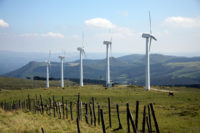Decline Continues for Solar Panel Manufacturing Revenue

The solar panel manufacturing industry has experienced a rapid rise and fall over the past five years. While government incentives for downstream customers fueled strong growth early on, tax credits reduced the cost of solar panels, making them more affordable for consumers and businesses. In addition, rising coal and gas prices have also improved solar power’s competitiveness against traditional electricity generators.
But as silicon prices fell, international manufacturers were able to pump out large quantities of low-cost solar panels, increasing competition with the U.S. industry. Consequently, solar panel prices plummeted in 2011 and revenue deteriorated, falling 21.6% in 2011 and an expected 32.5% in 2012, according to a new report from IBISWorld. As a result of the contrasting trends over the past five years, revenue is estimated to fall at an annualized rate of 3.9% to $823.1 million in 2012.
From 2007 to 2010, solar panel manufacturing reportedly benefited from federal government tax credits, which allowed manufacturers to expand production and develop new products. In addition, state renewable portfolio standards strengthened demand from the downstream solar power industry. The manufacturing industry also benefited from European incentives for solar power, which bolstered exports, according to the report. “These trends reversed in 2011, though, when the domestic market was saturated with cheap solar panels, mostly from China,” said David Yang, industry analyst for IBISWorld. “As a result, solar panel prices deteriorated, causing revenue to collapse.”
This was further exacerbated by the European debt crisis, which reduced international demand for U.S.-manufactured solar panels. Low solar panel prices also cut into industry profitability, causing firms to exit this industry. Many firms also went bankrupt in the face of competition, with Solyndra as the most high-profile case.
As firms have exited the industry, market share concentration has been increasing. Growth in concentration may be short-lived, though, with major companies SolarWorld and First Solar continuing to restructure and downsize domestic manufacturing operations. For example, First Solar is focusing efforts on power plant engineering, design and construction services. Over the next five years, more industry firms are anticipated to scale down manufacturing operations due to international competition. Consequently, market share concentration is forecast to fall.
In the next five years, this industry is expected to continue its decline as unprofitable firms exit the industry. Government incentives will slightly mitigate falling revenue; recently enacted trade tariffs will also slightly reduce competition from imports. Nonetheless, domestic firms will still have difficulty competing on manufacturing cost against their Chinese counterparts. Consequently, industry firms are anticipated to restructure operations to focus on solar power plant design and construction or high-tech, high-efficiency panels that are superior in quality to imported solar panels.
For additional information, visit www.ibisworld.com.
Looking for a reprint of this article?
From high-res PDFs to custom plaques, order your copy today!




